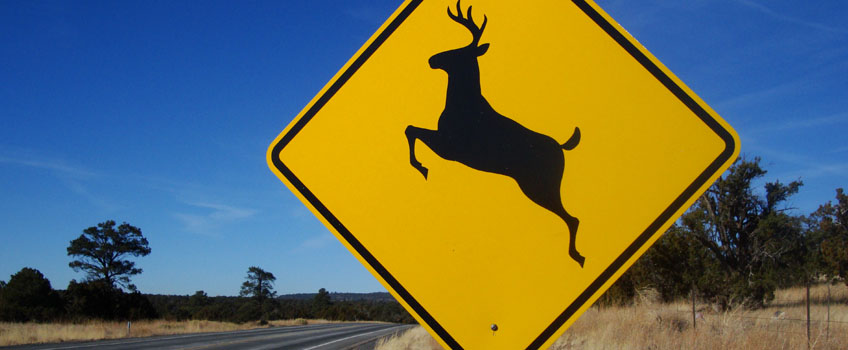Follow these Defensive Driving Tips to Avoid Hitting Deer
December 10, 2019
While the state's two million deer are most active in spring and fall, vehicle-deer crashes are a year-round problem. Each year, there are nearly 50,000 reported vehicle-deer crashes in Michigan. About 80 percent of these crashes occur on two-lane roads between dusk and dawn. The most serious crashes occur when motorists swerve to avoid a deer and hit another vehicle or a fixed object, or their vehicle rolls over.
Follow these safe driving tips when encountering deer on the road:
- Always wear a seatbelt. Most people who are injured in vehicle-deer crashes are not wearing seatbelts;
- Be alert for deer, especially between dawn (5-8 a.m.) and dusk (6-10 p.m.). Vehicle-deer crashes occur all year-round, but are more prevalent in spring and fall;
- Pay attention to deer crossing and speed limit signs. Be especially alert in areas where roads divide forestland and agricultural fields; and
- Be cautious if you see one deer, there may be others nearby. Deer seldom run alone.
If a crash is unavoidable:
- Don't swerve. Brake firmly, hold onto the steering wheel, and bring your vehicle to a controlled stop;
- Pull off the road, turn on your emergency flashers, and be cautious of other traffic if you exit your vehicle;
- Do not touch the animal. A frightened and wounded deer can not only cause harm to you, but also to itself;
- Report the crash to the Southfield Police Department by calling the City’s Animal Assistance Hotline at (248) 796-5410; and
- Call your insurance company to report any damage to your car. Collision with an animal is covered under the comprehensive portion of most auto insurance policies.
Are deer aggressive?
White-tailed deer are not inherently aggressive animals. In fact, given the choice of fight or flight, white-tailed deer use flight as a survival strategy. However, like most animals, a white-tailed doe can become aggressive if she perceives that her young are threatened. Indeed, most reports of aggression tend to happen around fawning areas. Instances of a buck attacking people are rare.
To reduce the likelihood of an unfavorable encounter, there are a few common sense measures we can all take:
- Don't intentionally feed deer;
- Never, under any circumstance, approach a deer;
- Be especially cautious of deer with fawns. Mother deer are very protective of their young;
- Attacks by bucks are rare, but they may become aggressive in "rut" season – October through December;
- If you do see a deer, observe it from a distance, preferably from inside a structure or vehicle;
- Keep your pets inside when there are deer in your yard; and
- Invest in a fence if they continue to be a problem or nuisance.
Don't disturb fawns!
Sometimes people call animal control and wildlife rehabilitators about lone fawns they find in woods, fields and backyards. They assume these fawns have been orphaned. In the vast majority of cases, the fawns have not been abandoned -- usually the mother is nearby, aware and attentive. Except when feeding them, mothers hide their young to avoid attracting predators.
It is perfectly natural in the spring to come across a deer fawn by herself in the woods. If you find a fawn like this, leave her alone knowing that a concerned and anxious mother is nearby and will take care of her once you leave.
To report an animal-related issue or for more information, call Southfield Animal Control at (248) 796-5410.
